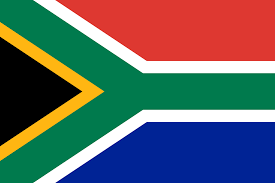Language/Afrikaans/Grammar/Nouns
Hi Afrikaans learners! 😊
In this lesson, we will be focusing on Afrikaans nouns. Don't forget to check out our Grammar page for additional information.
Before we get started, let's review some key concepts.
Table of Contents[edit | edit source]
Basic Concepts[edit | edit source]
Nouns are words that denote a person, place, thing, or idea. In Afrikaans, nouns can be divided into two categories: common and proper nouns. Common nouns refer to any person, place, or thing, while proper nouns refer to specific people, places, or things. For example:
- Common noun: straat (street)
- Proper noun: Voortrekkerstraat (Voortrekker Street)
Additionally, Afrikaans nouns have gender. There are two genders: masculine and feminine. Most feminine nouns end in "-e", while masculine nouns generally don't. For example:
| Afrikaans | Pronunciation | English |
|---|---|---|
| meisie | /ˈmɛisi/ | girl |
| seun | /ˈsœn/ | boy |
| huis | /ˈɦœys/ | house |
Notice how "meisie" is a feminine noun, and it ends in "-e". On the other hand, "seun" and "huis" are masculine nouns which don't have the "-e" ending.
Plural Nouns[edit | edit source]
To make a plural noun in Afrikaans, you usually add "-e" to the end of the word if it's a feminine noun, and "-s" if it's a masculine noun. Here are some examples:
| Afrikaans | Pronunciation | English |
|---|---|---|
| kat (cat) | /kɑt/ | cats |
| meisie (girl) | /ˈmɛisi/ | girls |
| man (man) | /man/ | men |
Notice how the masculine noun "man" changes to "manne" to make it plural. Also, the feminine noun "meisie" adds an "-e" to make it plural.
In some cases, a word requires an additional letter to be added before the "-e" ending. For example:
| Afrikaans | Pronunciation | English |
|---|---|---|
| land (country) | /lant/ | countries |
| dier (animal) | /diər/ | animals |
| voet (foot) | /fut/ | feet |
Notice how the words "land", "dier" and "voet" need an additional letter "e" before the "-e" ending. This is commonly seen in words with consonant clusters.
Possessive Nouns[edit | edit source]
In Afrikaans, possessive nouns are formed by adding "- se" to the end of a noun. For example:
- Mari se hond (Mari's dog)
Notice how "hond" (dog) becomes "hond se" when indicating that it belongs to Mari.
Dialogue[edit | edit source]
To help you see these concepts in action, here's a dialogue between two people:
- Person 1: Het jy my kat gesien? (Have you seen my cat?)
- Person 2: Nee, ek het nie jou kat gesien nie. (No, I haven't seen your cat.)
- Person 1: Hy is oranje en wit. (He is orange and white.)
- Person 2: Misschien is hy in die huis. (Maybe he's in the house.)
- Person 1: Ek sal gou daar gaan kyk. Dankie! (I'll go check there quickly. Thank you!)
Interesting facts[edit | edit source]
- Afrikaans takes some inspiration from Dutch when it comes to grammar and vocabulary. However, South African coloquial words and some words from other African languages have also been incorporated into the language. - Afrikaans has been designated as the third official language of South Africa since 1925. The language is spoken by about 7 million people in South Africa. - The vowels of Afrikaans always appear in the sequence "a-e-i-o-u" in that order.
Practice exercise[edit | edit source]
Transform the following singular nouns into plural nouns:
1. meisie 2. leerling 3. huis 4. man 5. ander
Sources[edit | edit source]
➡ If you have any questions, please ask them in the comments section below.
➡ Feel free to edit this wiki page if you think it can be improved. 😎
Other Lessons[edit | edit source]
- Questions
- Negation
- The Rule of “One Knee”
- Pronouns
- Gender
- Common Errors
- How to Use Be
- How to Use Have
- Definite article
- Conditional Mood

